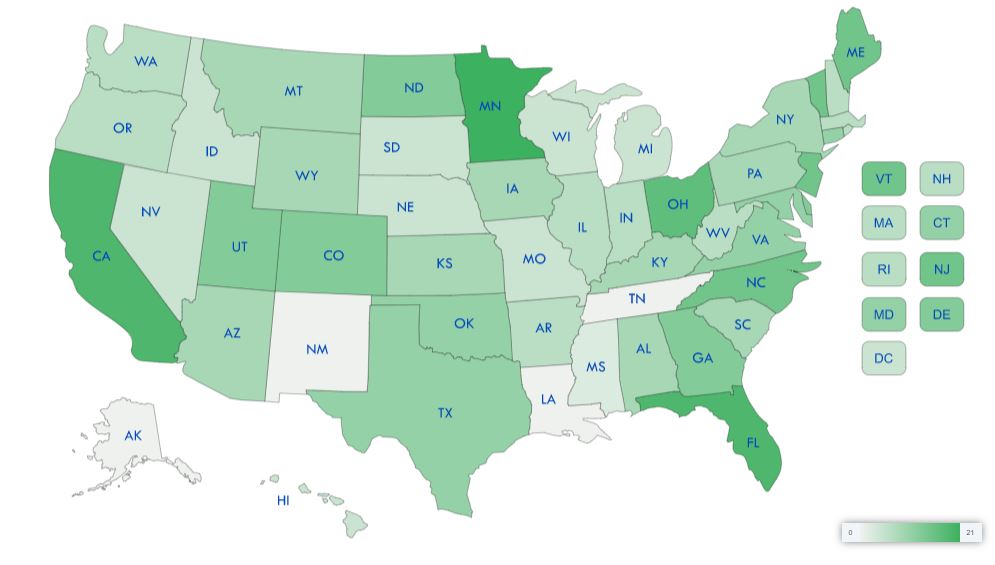Minnesota, California, Florida rated most IT-ready states
The Internet Association trade group released a map representing its analysis of information technology (IT) readiness in all 50 states, the District of Columbia, and U.S. territories.
 SITARA, or the State, Local, Tribal, and Territorial Information Technology Advancing Reform Achievements, used an established baseline of participation in programs recommended by the U.S. Cybersecurity and Infrastructure Security Agency (CISA).
SITARA, or the State, Local, Tribal, and Territorial Information Technology Advancing Reform Achievements, used an established baseline of participation in programs recommended by the U.S. Cybersecurity and Infrastructure Security Agency (CISA).The map provides examples and data that may be used to strengthen public sector IT infrastructure now and in the future while factoring states’ unique circumstances.
It shows where additional support, whether from the federal government or through the budgeting process, can help states and territories move beyond baseline metrics, to ultimately help them provide a modern and secure IT infrastructure to their employees and the general public. Most states are preparing for cyber threats appropriately, but almost all are beginning their IT modernization plans.
Minnesota scored the highest among the 50 states with its “Very Good” score of 14 points on a 21-point scale. Joining it in achieving that rating were California and Florida with 13 points. Twenty-four states earned “Good” scores, and 23 states and the District of Columbia garnered “Getting Started” scores. None achieved “Exceptional” or “Excellent” ratings.
SITARA also determined that additional support, whether at the federal level or through the budgeting process, can help states and territories improve their modern IT and cybersecurity preparedness. Among territories, only Puerto Rico scored “Good,” while two territories earned “Getting Started” or “Baseline,” and two rated as “Needs Help.”
Most states lack a cloud first statute that requires the prioritization of cloud solutions. Thirty-two states have a cloud-related strategy, but only three have adopted a cloud first statute.
According to the association, most states are missing at least one of the three key components of a modern digital government experience. Although 20 states are undergoing a modernization effort through a Digital Service Team (DST), Innovation Focused Group, or other Digital Service Plan, seven states have a basic digital government experience with one having the characteristics of a modern digital government experience.

 512-531-3900
512-531-3900 Request More Info
Request More Info